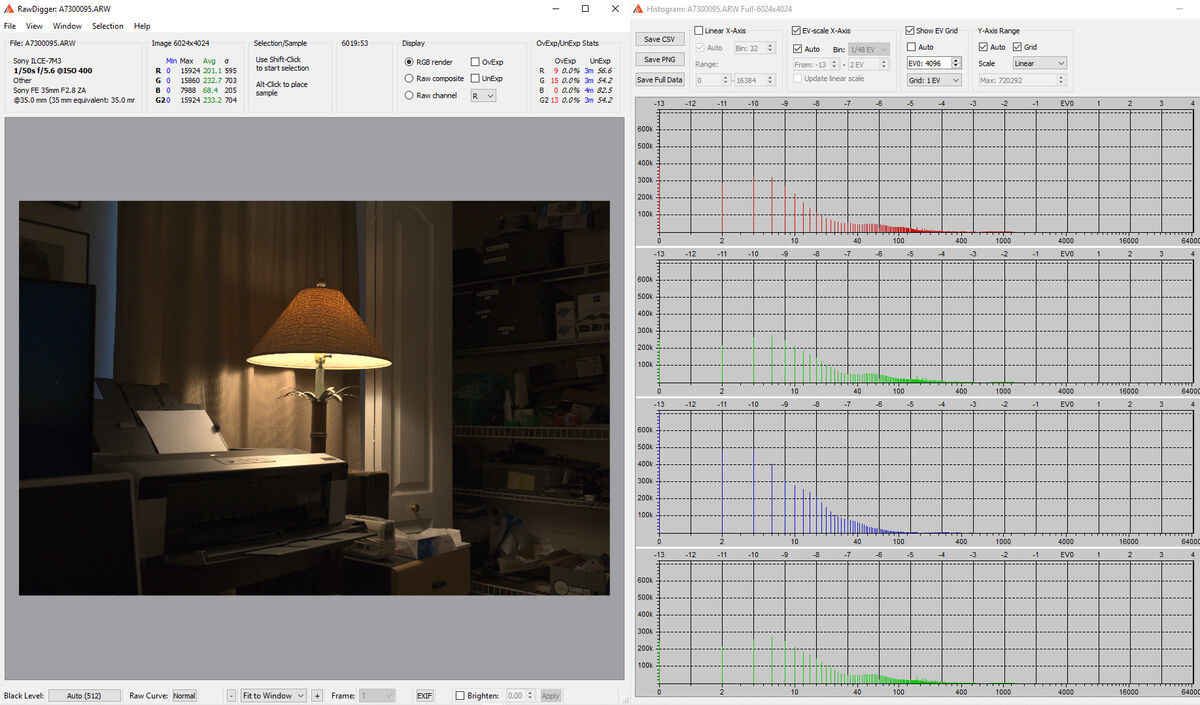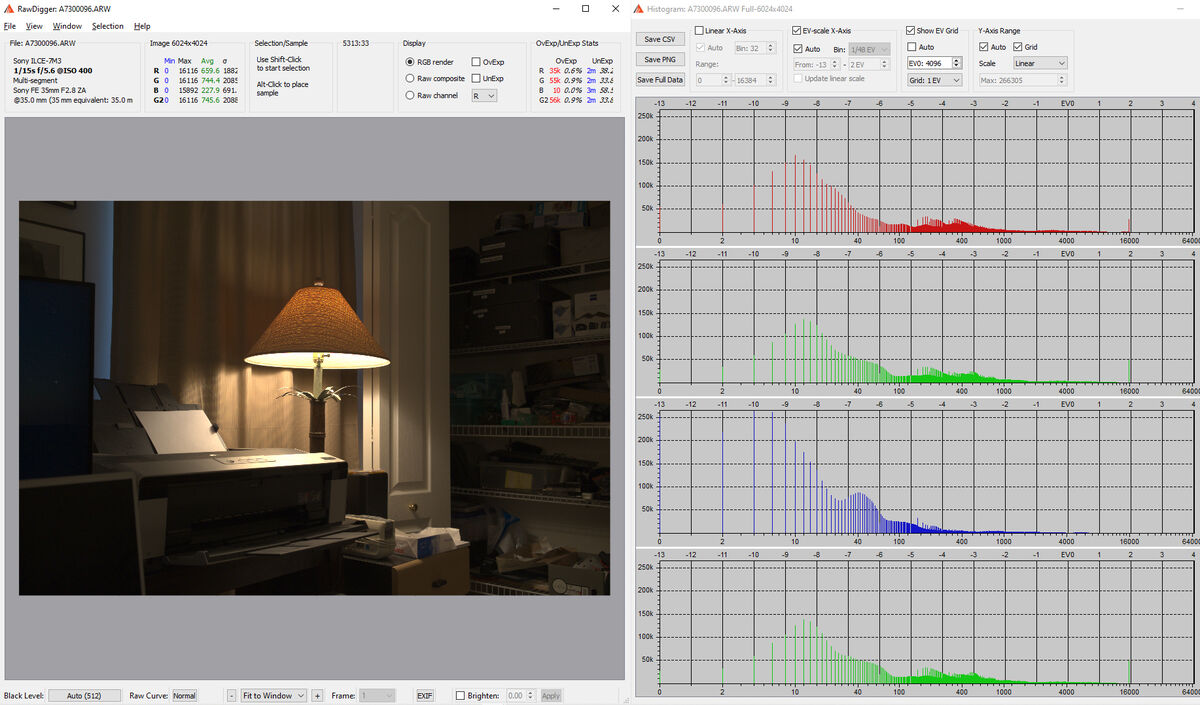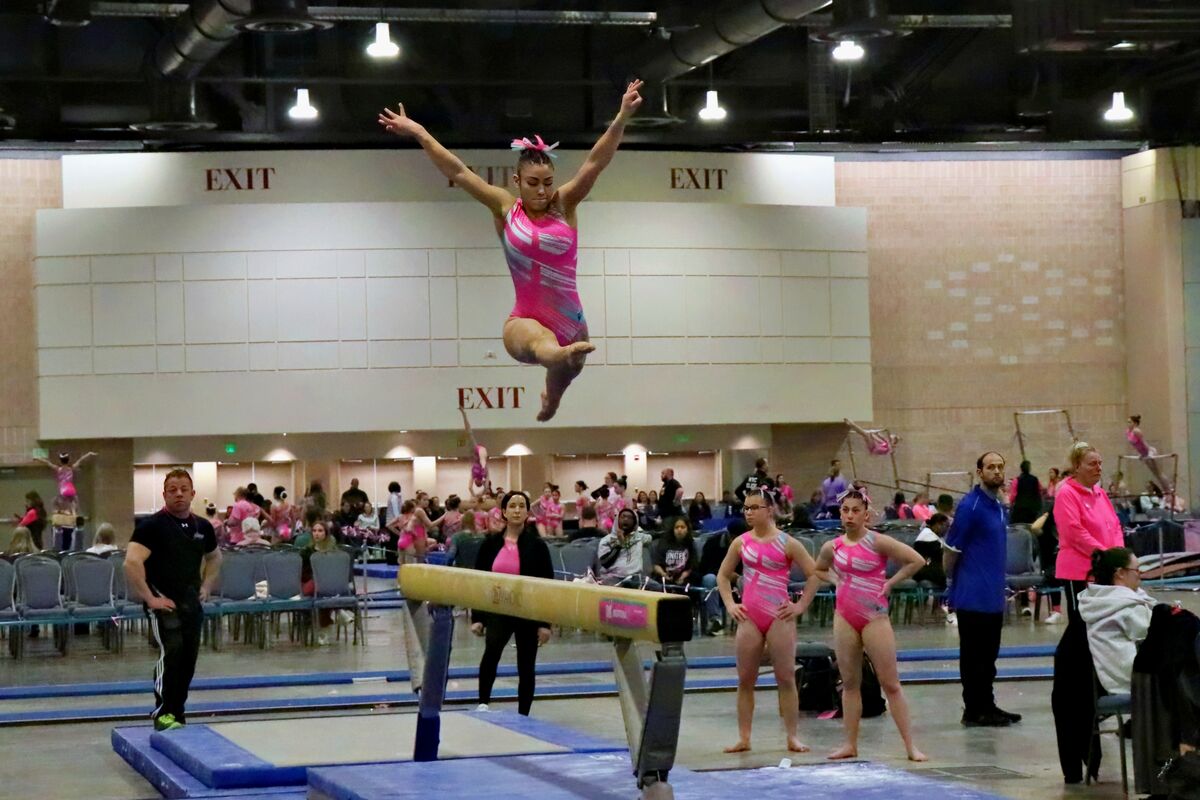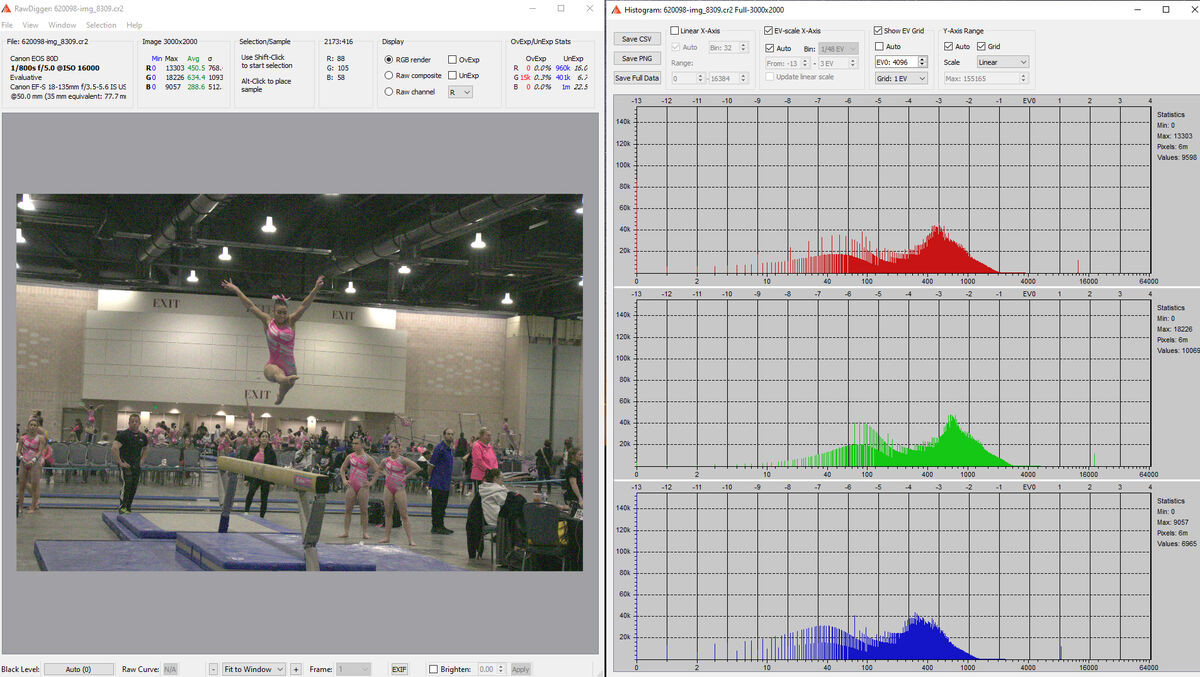Affinity Problem (Help)
Feb 27, 2024 01:28:01 #
Amadeus
Loc: New York
Ysarex wrote:
DPP has to lighten the raw data just as much as Affinity -- it's the same raw file. Both processors are working with the same data. DPP knows its own. It's optimized to work with raw data from Canon cameras. Affinity is a great raster editor with a mediocre raw processor tacked on.
I don’t use dpp that often but maybe I should. Use it for my raw files and affinity for the jpgs. I appreciate your input and advice. I got a lot of useful info from this post.
All their comments are much appreciated.
Feb 27, 2024 07:53:56 #
Amadeus wrote:
I've attached 2 photos. Same pic, one Raw the othe... (show quote)
Here is another example (take) on your pic using Topaz Photo AI.
I had to use the manual override for the noise and boost the exposure.
I do like the example that Ysarex provided.
Best Wishes,
JimmyT Sends

Feb 27, 2024 09:37:46 #
Ysarex
Loc: St. Louis
Amadeus wrote:
I don’t use dpp that often but maybe I should.
Not necessarily. I noticed another setting you're using with the camera that plays a role here. You have the camera set to save your CR2 files in the sRaw format. That's an additional complication and could go some way to explaining why DPP may seem to do a bit better. Affinity might be choking on sRaw -- it handles it but it doesn't like it. Some raw processors won't support it at all, eg. PL-7. The sRaw format is not really saving raw data. That sRaw file contains already demosaiced and processed RGB data.
You took the photo at a high ISO setting. If you do a lot of that then DPP is a poor choice for raw processing as its noise filtering ability is poor. Turn sRaw OFF, save straight CR2 files and use a state-of-the-art raw processor and you can have noiseless images at high ISOs.
Amadeus wrote:
Use it for my raw files and affinity for the jpgs. I appreciate your input and advice. I got a lot of useful info from this post.
All their comments are much appreciated.
All their comments are much appreciated.
Feb 27, 2024 11:12:50 #
Amadeus
Loc: New York
[quote=Jimmy T]Here is another example (take) on your pic using Topaz Photo AI.
I had to use the manual override for the noise and boost the exposure.
I do like the example that Ysarex provided.
Best Wishes,
JimmyT Sends
 [/
[/
That’s a nice job. Thank you. I can see how it compares to my own.
I had to use the manual override for the noise and boost the exposure.
I do like the example that Ysarex provided.
Best Wishes,
JimmyT Sends
 [/
[/That’s a nice job. Thank you. I can see how it compares to my own.
Feb 27, 2024 11:13:14 #
Amadeus
Loc: New York
Oh boy. I made that change a few months ago thinking sRAW and mRAW had something to do with file size, small, medium. Again, I can’t thank you enough. My granddaughter has another meet this coming weekend. It can’t come soon enough so I can see what these changes have done.
Feb 27, 2024 12:08:57 #
Amadeus wrote:
Well, thank you, thank you and thank you again. I found the setting turned it off and took some test shots around the house. The 2 files now look the same with regards to exposure anyway. Such a simple fix but I would never have figured out. Thanks again.
The problem is not the processing, it's all those bright lights.
Canon's Highlight Tone Priority is similar to Nikon's Highlight Weighted Metering and Sony's Highlight metering mode. They all adjust the exposure to limit the overexposed highlights.
Evaluative metering would have let them blow out more and lightened the raw data by giving less weight to the highlights. This would have called for a lower shutter speed or a wider aperture. That would have reduced the noise.
Don't shoot the messenger. No other processor would have done any better than Affinity.
Feb 27, 2024 12:09:28 #
Feb 27, 2024 13:19:01 #
Ysarex
Loc: St. Louis
selmslie wrote:
Canon's Highlight Tone Priority is similar to Nikon's Highlight Weighted Metering and Sony's Highlight metering mode. They all adjust the exposure to limit the overexposed highlights.
This is incorrect. Canon's HTP does not affect the camera's metering or the exposure settings the meter selects. HTP does not adjust the exposure. I explained how it functions in a earlier post: https://www.uglyhedgehog.com/t-800715-1.html#14477798
Feb 27, 2024 14:57:12 #
Ysarex wrote:
This is incorrect. Canon's HTP does not affect the camera's metering or the exposure settings the meter selects. HTP does not adjust the exposure. I explained how it functions in a earlier post: https://www.uglyhedgehog.com/t-800715-1.html#14477798
Your explanation is not as good as the one from EOS magazine HIGHLIGHT TONE PRIORITY:
"What settings does HTP change?
When Highlight Tone Priority is enabled, the following changes are made:
Lowest available ISO setting is 200
D+ (or D+2) appears by the ISO value on rear screen/in viewfinder
(on much older cameras, the zeroes in the ISO value display as lower case ‘o's (for example ‘2oo’))
Auto Lighting Optimizer is disabled
So, if you are wondering why ISO 200 is the lowest you can set and why there’s a D+ showing on-screen, then check your Highlight Tone Priority setting in the Shoot menu."
It also states that, "However, the camera marks the file as being taken using HTP and applies a tone curve that brightens shadows and mid-tones, but which holds back the highlights." Cleary, the tone curve is applied to the JPEG, not the raw data.
This agrees with the information provided by CanonUSA.
HTP only affects the raw file by adjusting the exposure via. the ISO/exposure relationship. Whatever it might do differently to the camera's JPEG is irrelevant if you are going to develop the image on your computer.
Ysarex wrote:
Highlight Tone Priority is unusual in that it's a JPEG adjustment function that also has a permanent effect on the raw file.
You recognize that there is a JPEG adjustment but the "permanent effect on the raw file" is only the result of the change in exposure.
Your explanation is poorly worded, mine is correct.
Feb 27, 2024 15:49:45 #
Ysarex
Loc: St. Louis
selmslie wrote:
Your explanation is poorly worded, mine is correct.
Your explanation is here: https://www.uglyhedgehog.com/t-800715-2.html#14478803
"Canon's Highlight Tone Priority is similar to Nikon's Highlight Weighted Metering and Sony's Highlight metering mode. They all adjust the exposure to limit the overexposed highlights." [my bold] That is still incorrect as I noted. HTP does not adjust the camera's metered exposure.
The explanation in the article you posted from EOS magazine is fair, you should have read it all. Especially where it says you are wrong: "As an example, if you photographed a scene without HTP at ISO 400, the camera’s metering system might suggest 1/400 second at f8....When you enable HTP, the camera will still meter the scene at ISO 400 and still select the same shutter speed and aperture as before. Exactly the same signal will be recorded on the sensor." [my bold]
selmslie wrote:
You recognize that there is a JPEG adjustment but the "permanent effect on the raw file" is only the result of the change in exposure.
Again you are wrong. The HTP function does not change/adjust exposure. See the article you posted that notes you are wrong: "When you enable HTP, the camera will still meter the scene at ISO 400 and still select the same shutter speed and aperture as before. Exactly the same signal will be recorded on the sensor. The difference is that this time the amplifier will be set one stop ‘quieter’ (so ISO 200 instead of ISO 400). This means that the RAW file that’s generated will have numerical values that are half of the corresponding values that would have been produced without HTP enabled."
Feb 27, 2024 16:34:12 #
Ysarex wrote:
The explanation in the article you posted from EOS magazine is fair, you should have read it all. Especially where it says you are wrong: [/i]"
"The difference is that this time the amplifier will be set one stop ‘quieter’ (so ISO 200 instead of ISO 400). This means that the RAW file that’s generated will have numerical values that are half of the corresponding values that would have been produced without HTP enabled. If you could view the image at this stage, you would see it as being one stop underexposed and hopefully without any blown-out highlights. "
So the raw data was recorded with the gain for ISO 200 instead of 400. Consequently the raw file (and the untreated JPEG) appears to be underexposed by one stop - different gain. As far as the raw file is concerned, it's a different ISO.
But this is a poor way to deal with highlights. Canon only gets a one stop benefit whether the scene warrants it or not. That's not very sophisticated. It overlooks the possibility that exactly one stop may not be right.
Suppose that the highlights were actually light sources as the OP was looking at. Sony and Canon would actually adjust the exposure more than one stop and end up with almost no blown highlights. And if they actually needed less than a full stop they would use less than a full stop adjustment.
That's why I suggested not using HTP, just Evaluative metering, and letting the light sources blow out.
Raw is a subject that you are still learning about.
Feb 27, 2024 16:53:31 #
selmslie wrote:
Suppose that the highlights were actually light sources as the OP was looking at. Sony and Canon would actually adjust the exposure more than one stop and end up with almost no blown highlights. And if they actually needed less than a full stop they would use less than a full stop adjustment.
Here is a Sony example with a light source.
Highlight metering, 1/50s - 37 blown raw pixels

(Download)
Multi Segment, 1/15s - about 146k blown raw pixels

(Download)
Feb 27, 2024 17:57:25 #
selmslie wrote:
The problem is not the processing, it's all those ... (show quote)
You say "The problem is not the processing, it's all those bright lights." -- Of course the problem/issue raised by the OP is the processing done by Affinity as compared to other means of processing a RAW file.
"No other processor would have done any better than Affinity." -- This is apparently wrong; did you read Linda's comments re how PS Elements handled the RAW development?
Ysarex gave a clear, and what to me seems a good answer. If you disagree with him stick to the actual issue.
Feb 27, 2024 18:07:22 #
srt101fan wrote:
You say " i The problem is not the processing... (show quote)
Both of them jumped to the conclusion that the software was to blame. They were both wrong.
The problem starts with the wrong exposure. The software is being blamed for having to use it to cover up that error.
It's OK to let the light source blow out in the highlights. A more experienced photographer would recognise that.
Feb 27, 2024 18:29:44 #
selmslie wrote:
Both of them jumped to the conclusion that the software was to blame. They were both wrong.
The problem starts with the wrong exposure. The software is being blamed for having to use it to cover up that error.
It's OK to let the light source blow out in the highlights. A more experienced photographer would recognise that.
The problem starts with the wrong exposure. The software is being blamed for having to use it to cover up that error.
It's OK to let the light source blow out in the highlights. A more experienced photographer would recognise that.
Why are you ignoring the OP's question? All he wanted to know is why Affinity produced a darker JPEG than Windows or the Canon DPP Raw editor.
You enjoy arguing and don't care how much you twist things around.
I've said my piece.
If you want to reply, then register here. Registration is free and your account is created instantly, so you can post right away.



